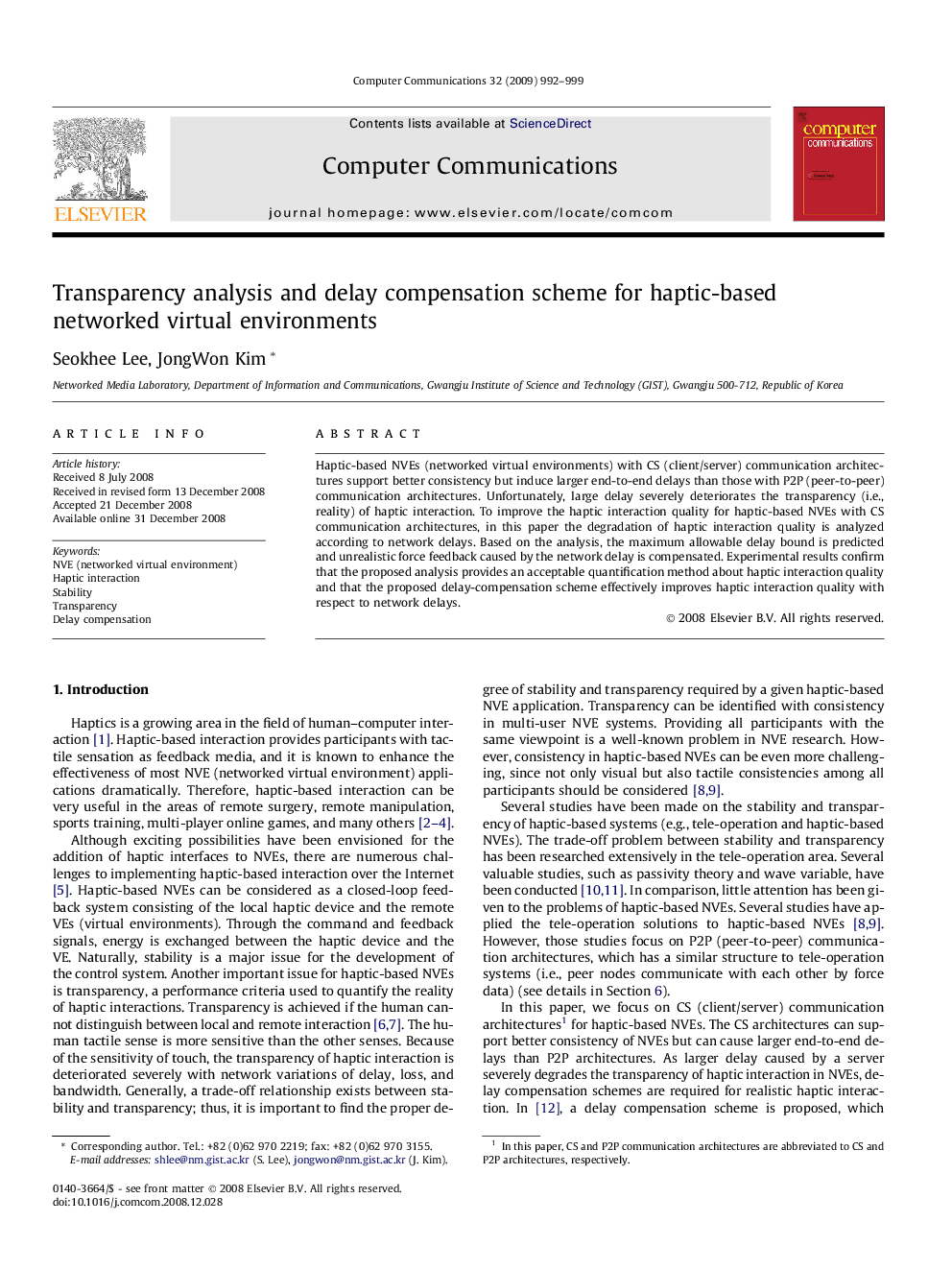| Article ID | Journal | Published Year | Pages | File Type |
|---|---|---|---|---|
| 450265 | Computer Communications | 2009 | 8 Pages |
Haptic-based NVEs (networked virtual environments) with CS (client/server) communication architectures support better consistency but induce larger end-to-end delays than those with P2P (peer-to-peer) communication architectures. Unfortunately, large delay severely deteriorates the transparency (i.e., reality) of haptic interaction. To improve the haptic interaction quality for haptic-based NVEs with CS communication architectures, in this paper the degradation of haptic interaction quality is analyzed according to network delays. Based on the analysis, the maximum allowable delay bound is predicted and unrealistic force feedback caused by the network delay is compensated. Experimental results confirm that the proposed analysis provides an acceptable quantification method about haptic interaction quality and that the proposed delay-compensation scheme effectively improves haptic interaction quality with respect to network delays.
